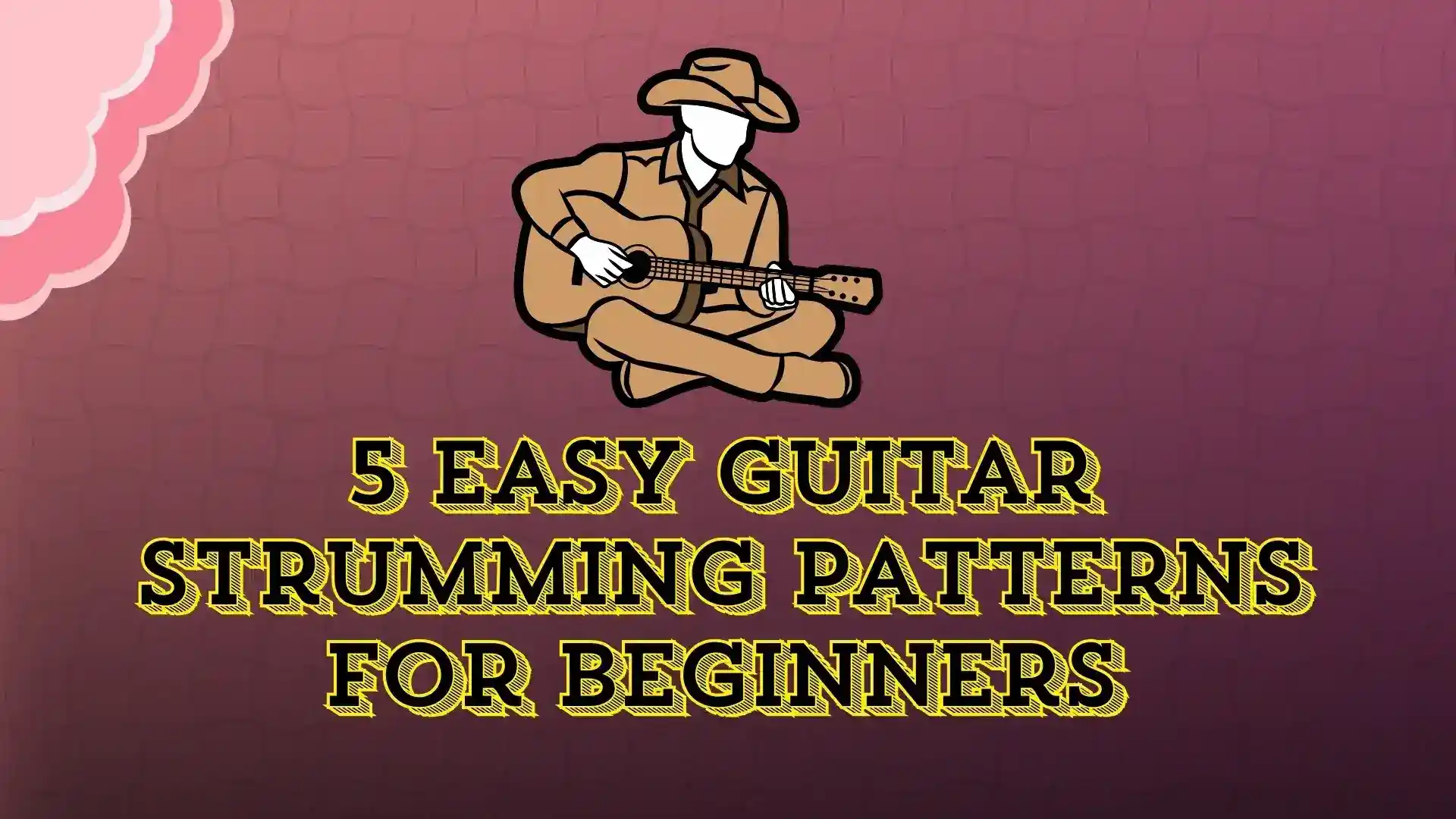Overview & Purpose:
Playing different guitar strumming patterns is something a lot of beginner guitar players struggle with. But it is not as difficult as it seems. It all comes down to understanding the rhythm and unlocking your strumming hand to the point where you can play any strumming pattern without difficulty. In this lesson, we will learn some great sounding yet simple strumming patterns to get you started with your guitar journey.

Music, from the soothing melody of a lullaby to the crescendo of a symphony has the ability to stir up a range of emotions, within us.
Tip:
To understand strumming patterns, one must have a basic knowledge of rhythm and how a metronome works. If you are not aware of metronome and rhythm, counting numbers from 1 to 4 can help us to get through this lesson, although learning about how a rhythm works will actually be required as you progress in your musical journey.
Given below are the 5 easy guitar strumming patterns for those of you who are trying to strum the guitar for the first time. For convenience, use a simple open chord like E minor to practice these strumming patterns.
Strumming Pattern 1
The easiest of all strumming patterns is 1 down strum on each of the 4 counts of the metronome. If you do not have a metronome, count 1, 2, 3, 4 out loud and play a down stroke on each number. This strumming pattern does not sound interesting but getting this right will help you with understanding and playing more complex strumming patterns.

Strumming Pattern 2
In this pattern we will use an 8 note rhythm instead of quarter note rhythm or 4 note rhythm. We will count this as 1&, 2&, 3&, 4&. Here all ‘&’ symbols (pronounced as ‘AND’ or simply ‘N’) are extra beats that we are adding after the 1st, 2nd, 3rd and 4th note, which makes this an 8 note rhythm.

Did You Know?
Have you ever considered how learning basic guitar strumming techniques can significantly improve your skills? By starting with patterns new guitar players can build a sense of rhythm setting the stage for mastering more advanced methods, in the future.
We will play a down stroke on 1, 2, 3 and 4 and an upstroke on all the &s. It will look like this:

TIP
While playing the upstroke it is not necessary to hit all the strings, you can simply hit the first 3 or 4 strings.
Strumming Pattern 3
Strumming pattern three is a combination of a quarter note and an eight note rhythm. To play this pattern you can play the down strokes on beat 1 and 2 then you play down on the 3rd beat followed by an immediate upstroke on the ‘& count’ and you repeat this for the 4th beat followed by an upstroke on the ‘& count’. The pattern will look like this:

Strumming Pattern #3 – D, D, DU, DU
Strumming Pattern 4
Strumming pattern four involves a slightly complex rhythm. The pattern uses one down stroke on the first beat, a down and up stroke on the second beat and an upstroke on the second ‘&’. The third beat is ignored as the next upstroke is played on the third ‘&’, while the last down stroke is played on the fourth beat and the last upstroke is played on the fourth ‘&’. This is how the pattern looks like:

Strumming Pattern 5
Next strumming pattern is an interesting one. This strumming pattern ends on the third beat unlike the previous ones. This has only three strokes; two down strokes on beats one and two, and an upstroke on the third beat. So. you only need to count to three. All three strokes fall on the beat like this:

This strumming pattern is widely used for songs composed in 3/4 or 6/8 time signatures widely featured in many waltzes and other ballroom dances. It has a different feel due to the odd number of beats in the measure, making this strumming pattern very unique and interesting to play.
Conclusion
Having different strumming patterns in your arsenal will help you add spice to the song and with these beginner strumming patterns, you will be able to strum 1000s of songs in any language or genre.
Learn to play Guitar by live 1 to 1 online guitar classes with qualified music tutors on musicmaster platform.
Discover the sounds of the A scale, on your guitar using our detailed guide. Master the finger placements grasp the theory behind this scale. Take your skills to another level. Immerse yourself in uncovering the techniques for perfecting this scale!
































